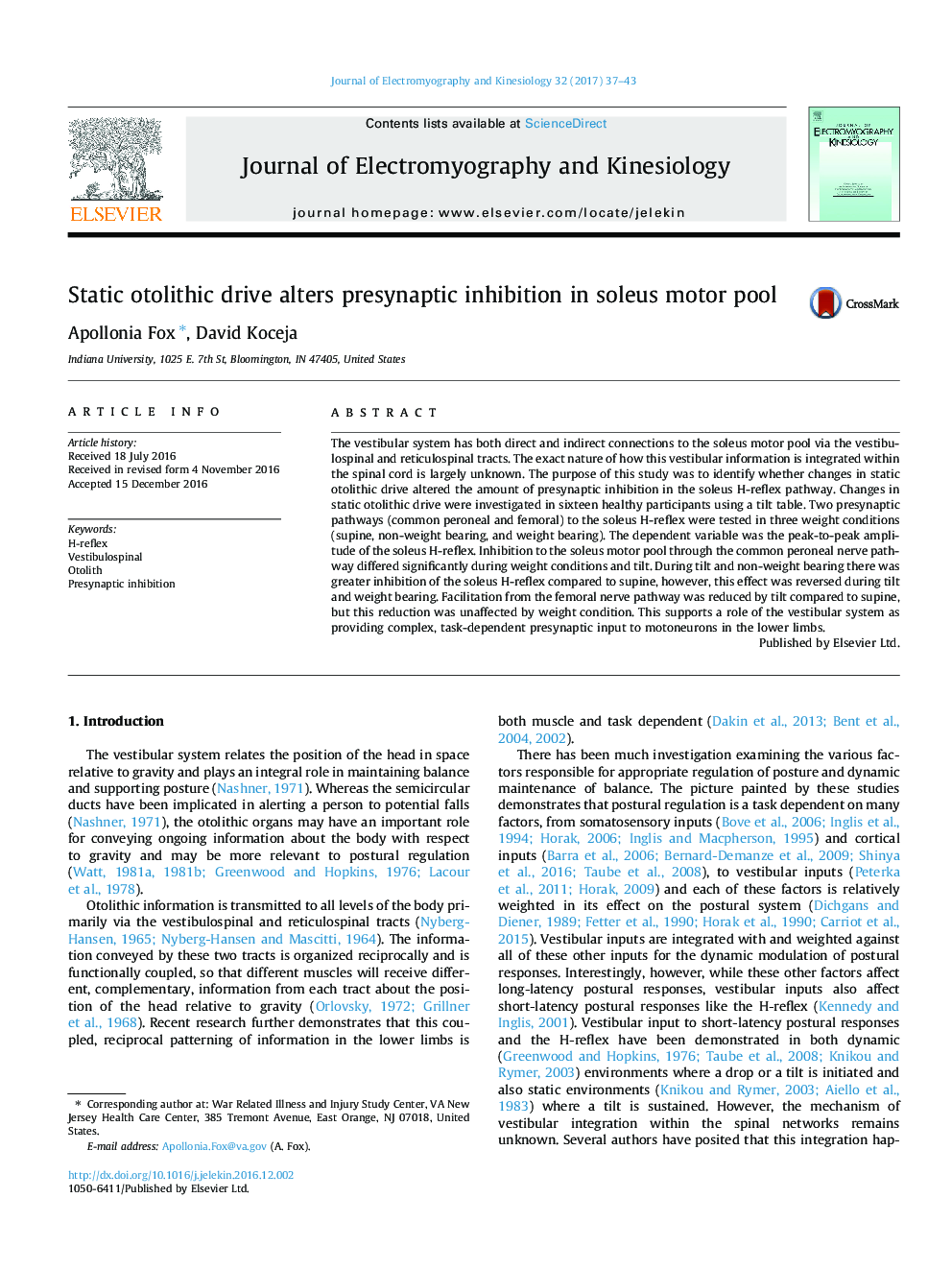| Article ID | Journal | Published Year | Pages | File Type |
|---|---|---|---|---|
| 5709522 | Journal of Electromyography and Kinesiology | 2017 | 7 Pages |
Abstract
The vestibular system has both direct and indirect connections to the soleus motor pool via the vestibulospinal and reticulospinal tracts. The exact nature of how this vestibular information is integrated within the spinal cord is largely unknown. The purpose of this study was to identify whether changes in static otolithic drive altered the amount of presynaptic inhibition in the soleus H-reflex pathway. Changes in static otolithic drive were investigated in sixteen healthy participants using a tilt table. Two presynaptic pathways (common peroneal and femoral) to the soleus H-reflex were tested in three weight conditions (supine, non-weight bearing, and weight bearing). The dependent variable was the peak-to-peak amplitude of the soleus H-reflex. Inhibition to the soleus motor pool through the common peroneal nerve pathway differed significantly during weight conditions and tilt. During tilt and non-weight bearing there was greater inhibition of the soleus H-reflex compared to supine, however, this effect was reversed during tilt and weight bearing. Facilitation from the femoral nerve pathway was reduced by tilt compared to supine, but this reduction was unaffected by weight condition. This supports a role of the vestibular system as providing complex, task-dependent presynaptic input to motoneurons in the lower limbs.
Related Topics
Health Sciences
Medicine and Dentistry
Orthopedics, Sports Medicine and Rehabilitation
Authors
Apollonia Fox, David Koceja,
